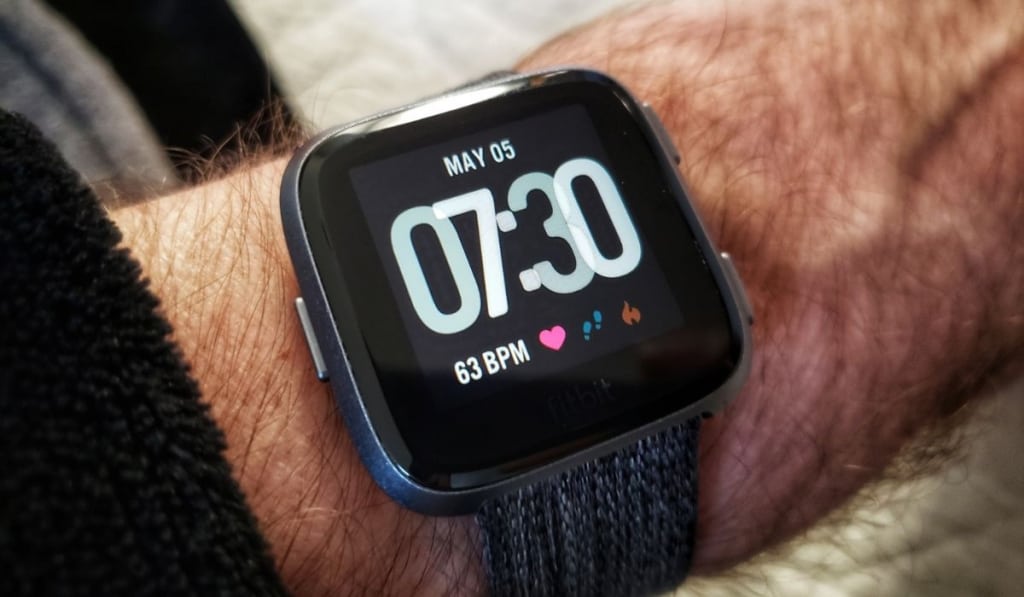Turning Off And Shutting Down Your Fitbit: Explained
While some Fitbit trackers can last several months without needing a charge, most will last between 7-10 days. But what if you want to shut the tracker or smartwatch off completely? Is it possible to shut down a Fitbit?
You can shut down most Fitbit watches through the settings app. However, you can’t shut down most Fitbit trackers completely. Turning off the auto-wake feature and dimming the screen’s brightness can also preserve the battery life.
Let’s look at which Fitbit models can be shut down, how to turn off auto-wake and use the screen dimming feature, and other ways to preserve your Fitbit’s battery.
Can You Shut Down a Fitbit?

You can only shut down some older Fitbit models and most Fitbit smartwatches. However, many commonly used Fitbits can’t be shut down completely.
While you can restart or reboot all Fitbits, you can only completely shut down some of them. However, there are other ways to preserve the battery on your Fitbit without shutting it down.
If your Fitbit can shut down, you can easily go onto Settings and select Shut Down. Some models also have a power button from which you can turn the Fitbit on and off.
While it’s unclear why Fitbit hasn’t added this feature to all devices, some of it has to do with the enhanced battery of most Fitbits.
Which Fitbit Models Can Turn Off?
Fitbit Sense and the Fitbits in the Versa series can be switched off, as can the Blaze, Surge, and Iconic. However, other popular Fitbit models like the Inspire and Charge can’t be shut down entirely unless you drain the battery.
However, all Fitbit models can be rebooted. All Fitbit models that can turn off will have the Shut Down option in the settings.
In some Fitbit models, you’ll find the Shut Down option directly under settings. In others, you’ll have to click on About under settings and then Shut Down.
This will turn the tracker off completely and can be a reliable method of saving the battery if you’ve forgotten your charger or don’t need to use the Fitbit for a while.
Does Turning off Your Fitbit Preserve Battery Life?
While it’s not the ideal method, turning off your Fitbit can preserve the battery life. However, the battery will still drain very slowly even when the Fitbit is switched off, and it will eventually die out if you leave the Fitbit for long enough.
However, it will take weeks for your Fitbit’s battery to drain completely when it’s shut down compared to around seven days if you leave the Fitbit switched on. So, if you don’t plan on using the Fitbit for a couple of weeks, switching it off can preserve the battery life.
However, if you plan on using the Fitbit regularly, there are better ways of preserving the battery life. Fitbits can last several days on a single charge, but you can prolong the battery life by lowering the screen’s brightness and turning off the auto-wake screen.
How to Dim the Screen
Dimming the Fitbit’s screen and turning off auto-wake are effective ways to preserve the Fitbit’s battery. You can dim the screen on both smartwatches and Fitbit trackers.
To dim the screen:
- Go onto Settings.
- Then select Brightness or Dim Screen.
This will save battery life, but you may also have visibility issues when outdoors.
How to Turn Off the Auto-Wake Screen
Turning off the auto wake feature is another effective way to preserve the Fitbit’s battery life. It will also prevent the Fitbit from switching on every time you move your wrist.
To turn off auto-wake:
- Go onto Settings.
- Select Screen Wake.
- Then make sure it’s turned off or on manual.
This is the most effective way to preserve the Fitbit battery since it uses more power when the screen is on.
Other Ways to Save Battery on Your Fitbit

While turning off auto-wake and dimming the Fitbit’s screen can help preserve its battery life, a few other solutions work just as well. These include setting fewer alarms, turning off all-day sync, and checking the stats less often. You can also turn the heart rate monitor off when you don’t need it.
Let’s look at some of these solutions more closely:
Set Less Alarms
Alarms consume quite a lot of power compared to other features, so try to cut down on the number of alarms you set on your Fitbit.
Turn off All-Day Sync
All-day sync is useful if you want to track your data in real-time through the Fitbit app. However, if you don’t mind syncing the data once daily or even weekly, you can turn off all-day sync to save the battery.
Check Your Stats Less Often
Different Fitbit models will have different ways of checking the stats. However, the battery will drain faster if you have notifications and reminders. You can turn all these features off in the settings app.
Turn Off the Heart Rate Monitor
While the heart rate monitor can be helpful during workouts, you don’t need to have it on all day. Turn off the heart rate monitor when you don’t need it, and you’ll preserve the Fitbit’s battery for much longer.